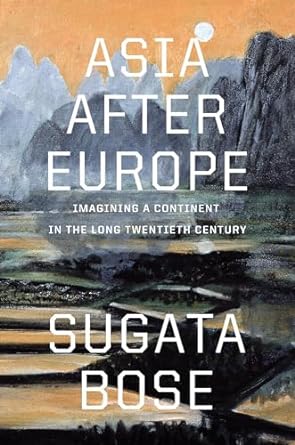Bose avers that during the 1910s, Tagore and fellow poet-philosopher Muhammad Iqbal had been shocked by the carnage triggered by European rivalries fuelled by intense nationalism. The decade of the 1930s showed that Asia was by no means immune to the virus of nationalism…reports Asian Lite News
Celebrated historian Sugata Bose, who holds Harvard University’s prestigious Gardiner Chair of Oceanic History, has said in his latest book that the “Asian Dream” remained unfulfilled because of two major events that unfolded in the last century.
The first was Japan’s invasion of China in 1937 and the second, China’s incursions into India that led to the 1962 War.
In his new book titled ‘Asia After Europe: Imagining A Continent In The Long Twentieth Century’ (HarperCollins), Bose, who also served as a TMC MP in the Lok Sabha between 2014 and 2019, writes: “Japan’s invasion of China undermined the idea of Asia as never before.”
He notes that Rabindranath Tagore, who kept a close watch on Japan, was dismayed because of the invasion and in his correspondence in 1937 with the Japanese poet Yone Noguchi — who had visited him in Santiniketan in 1935 — revealed the chasm in their interpretations of the Sino-Japanese conflict.
Bose, who’s also Netaji Subhas Chandra Bose’s grand nephew and director of the Netaji Research Bureau, Kolkata, writes that although the Congress, then led by Netaji, sent a medical mission to China under Dr Dwarkanath Kotnis as a gesture of Asian solidarity in the face of Asian aggression, the Japanese invasion was the first big crack in Asian cohesion that did not heal.
Bose avers that during the 1910s, Tagore and fellow poet-philosopher Muhammad Iqbal had been shocked by the carnage triggered by European rivalries fuelled by intense nationalism. The decade of the 1930s showed that Asia was by no means immune to the virus of nationalism.
He writes that one of the most dramatic manifestations of this trend was the dissolution of the bonds of the much-trumpeted brotherhood between India and China that culminated in a brief but bitter border war between the two countries in the autumn of 1962.
“Yet, even at that moment of rivalry and conflict between Asian nation-states, an intellectual quest began to discover what a Japanese scholar of modern Chinese literature, Takeuchi Yoshimi, evocatively called in a 1960 lecture ‘Asia as method’,” Bose notes.
Given all the faultlines between Asian nations, economic interdependence among Asian nations has grown rapidly between 1979 and 2019 with East, Southeast and South Asia conducting more than half of their international trade among themselves in the 2010s, compared with one-third in the 1980s.
“Cultural flows have been enhanced contributing to fresh synergies in the domains of Asian arts and humanities, the pace of intra-Asian migration quickened with people on the move across the vast continent in numbers unimaginable between the 1940 and the 1980s,” Bose writes.
He writes that the dream of Asian universalism had been shattered in the twentieth century by the conflict between Japan and China. “Its fate in the twenty-first century will depend to a significant extent on the ability of China and India to peacefully manage their simultaneous rise,” Bose says.
He writes that both Asian giants are beset with internal problems of inequity and their ability to address those may be just as important as the state of their mutual relations.
ALSO READ-Unveiling the Trends of 2024: Fashion, Beauty, and Lifestyle Edition
